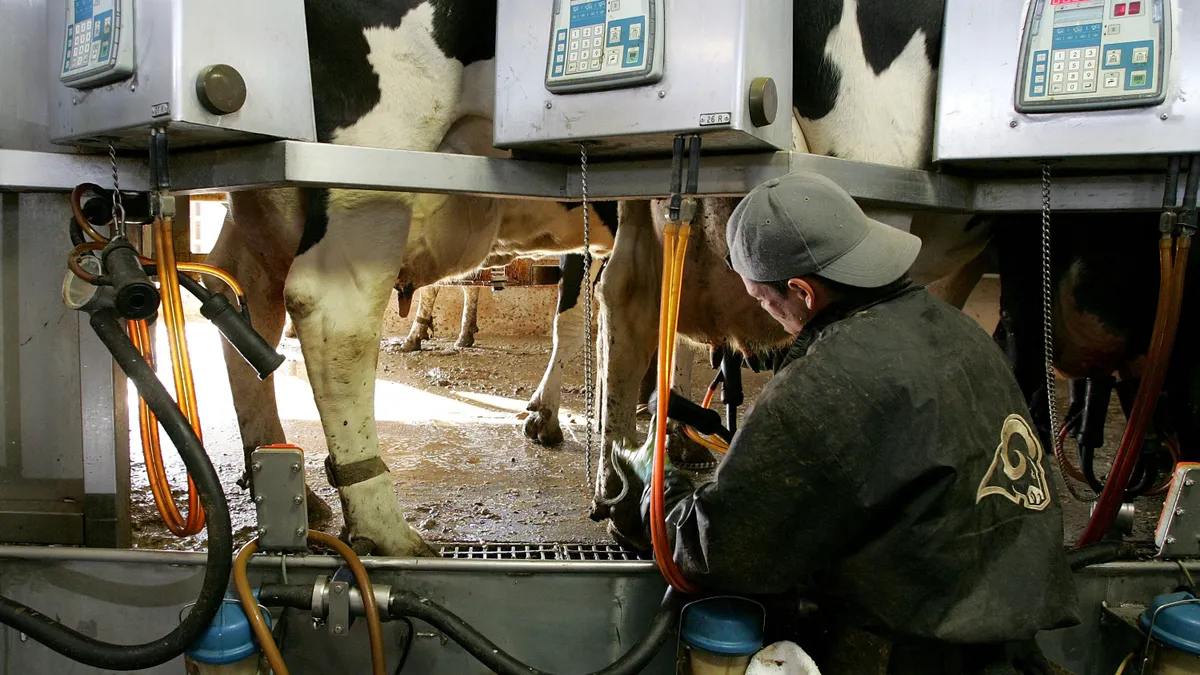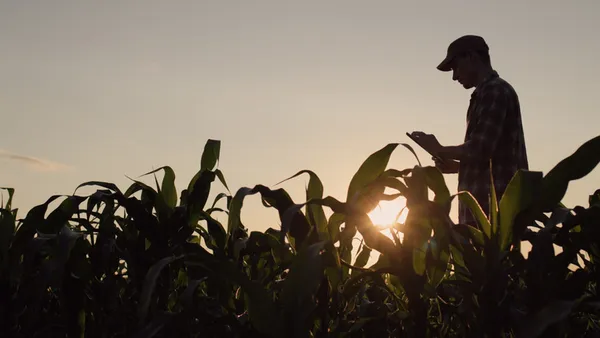A top of mind question among researchers and scientists has been how highly pathogenic avian influenza, also known as bird flu, was able to infect U.S. dairy cows. New research suggests that the milking process could be a factor in the spread of the virus, underscoring the need for enhanced biosecurity measures at dairies.
Contaminated milking equipment, the people doing the milking, or a combination of the two could be part of the reason for the spread of bird flu to cows, U.S. Department of Agriculture officials said Thursday at an international, virtual meeting, reported by Science.org. The virus might be transmitted from cow to cow in milk droplets on dairy workers’ clothing or gloves, or in the suction cups attached to the udders for milking, Mark Lyons, USDA’s director of ruminant health, said in the meeting.
In tests of milk, nasal swabs and blood from cows at affected dairies, USDA researchers have only found clear evidence of the H5N1 strain in the milk, suggesting the virus may only be replicating in the udder, not within the body of the cow. That makes cow-to-cow transmission of the virus less likely, according to experts.
“We haven’t seen any true indication that the cows are actively shedding virus and exposing it directly to other animals,” Lyons said.
Since the first case of bird flu in dairy cows was detected March 25, the USDA has confirmed it has spread to cattle in six states, according to a live tracker on the agency’s website as of April 8. There are no reports of the virus in beef cattle. One person has tested positive for bird flu after presumed contact with infected dairy cows in Texas, but the risk of transmission to the general public is low, according to the USDA.
Transportation could also play a role in how the virus was able to move into other states. Infected cows from a farm in Texas were unknowingly transported to farms in Idaho, Michigan and Ohio, according to USDA researchers.
“The cow viruses so far have all been similar enough that it would be consistent with a single spillover event or a couple of very closely related spillover events,” Suelee Robbe Austerman, of USDA’s National Veterinary Services Laboratory in Ames, Iowa, said in a meeting viewed by Science.org. “So far we don’t have any evidence that this is being introduced multiple times into the cows.”
As a result, federal and state animal health officials have issued guidance for cattle operators to enhance their biosecurity by limiting the number of people on their farm and transportation of their animals to other locations.
The USDA and the Food and Drug Administration have stressed there is “no concern” about the virus contaminating commercial milk, due in part to regulatory practices and pasteurization that kills viruses.
The Centers for Disease Control and Prevention on Friday issued updated recommendations for farm workers to avoid close contact with dead animals, feces, milk or litter from affected birds or livestock. The agency also recommended workers wear personal protective equipment, such as an N95 facepiece respirator, eye protection and gloves.
Animal disease experts are still collecting large amounts of data to better understand the types of bird flu affecting dairy cows in multiple states, Rosemary Sifford, USDA’s chief veterinary officer and deputy administrator of veterinary services, said in an agency broadcast Friday.
“Looking at that data and those test results, we will continue to develop recommendations for producers for how to control and prevent the illness that they are seeing in their dairy cattle at this time,” Sifford said.











